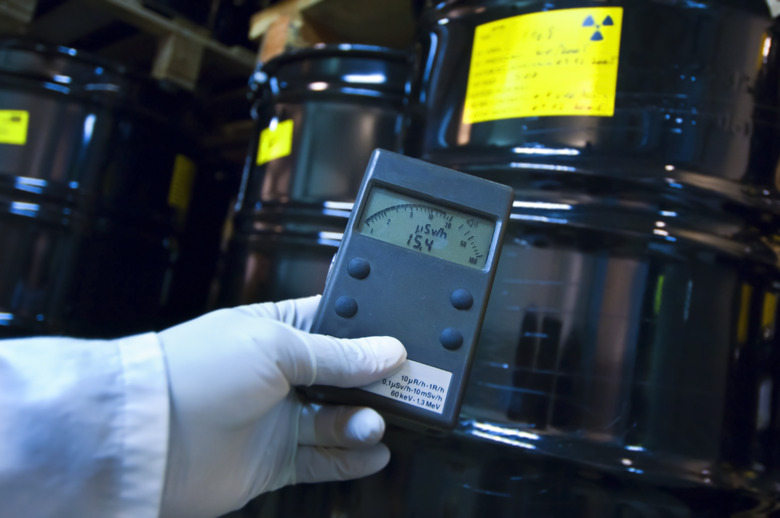How To Convert CPMs To DPMs
The difference between counts per minute (CPM) and disintegrations per minute (DPM) lies in efficiency. Whereas DPM merely measures the number of atoms that decay in one minute given a select amount of radioactive material, CPM provides for the exact quantity of those atoms that have actually decayed. Thus, determining CPM requires using a radioactive detection device such as a scintillation counter. And every such device has an efficiency rating, and it is this rating that connects CPMs to DPMs. More importantly, it is this rating that must be removed from the value of CPMs to derive the DPMs.
Step 1
Establish the algebraic relationship between CPMs and DPMs:
DPM = CPM / Efficiency
Step 2
Determine the efficiency. This value will be based on the type of radiation detector being used and the energy of the radioactive isotopes.
Step 3
Plug the CPMs and efficiency into the equation from Step 1. Given 22,000 CPMs and an efficiency of 22%, for instance, the equation would read DPMs = 22,000 / .22. The solution to this equation is 100,000. This means that given a measurement of 22,000 CPMs as per a 22% efficiency rating, this measurement is equivalent to 100,000 DPMs.
Cite This Article
MLA
Saxena, Vivek. "How To Convert CPMs To DPMs" sciencing.com, https://www.sciencing.com/convert-cpms-dpms-8786645/. 13 March 2018.
APA
Saxena, Vivek. (2018, March 13). How To Convert CPMs To DPMs. sciencing.com. Retrieved from https://www.sciencing.com/convert-cpms-dpms-8786645/
Chicago
Saxena, Vivek. How To Convert CPMs To DPMs last modified March 24, 2022. https://www.sciencing.com/convert-cpms-dpms-8786645/
